- Home
- Alison Weir
Katherine Swynford Page 3
Katherine Swynford Read online
Page 3
In December 1351, hoping to enlist the support of Edward III, Margaret fled to England with her household, taking Paon with her. Given the uncertainty of any future in Hainault, he is likely to have brought with him his children, Walter, Katherine and possibly Philippa, and indeed his wife, if she was still alive. Elizabeth, of course, was left behind in her convent; it is doubtful if Katherine ever knew her elder sister.
A settlement was quickly reached between Margaret and her son, whereby Margaret was to keep Hainault, and early in 1352, William came to England to be married to King Edward's cousin, Matilda (or Maud) of Lancaster. In March, when the Hainault royals returned home, Paon was with them, but after August 1352, he disappears from contemporary sources entirely. His date of death is nowhere recorded, and we know only that he was buried in Old St Paul's Cathedral in London, where a memorial inscription to him was put in place after 1396. In 1631, in his Ancient Funerary Monuments, JohnWeever described Paon's sepulchre, which was 'in this cathedral church, and near unto Sir John Beauchamp's tomb, upon a fair marble stone, inlaid all over with brass (of which nothing but the heads of a few brazen nails are at this day visible) and engraven with the representation and coat [of] arms of the party defunct. Thus much of a mangled funeral inscription was of late time perspicuous to be read, as followeth: Hie jacet Paganus Roët miles Guyenne RexArmorum Pater Catherine Ducisse Lancastriae' ('Here lies Paon Roët, soldier, Guienne King of Arms, father of Catherine, Duchess of Lancaster').
The likelihood is that Katherine herself commissioned this tomb and memorial for her father. Weever's description suggests that the tomb was of great antiquity in 1631, and the use of Katherine's title without anything to qualify it (such as 'late Duchess') implies that it was executed in her lifetime, which would date the tomb to the period 13 96-1403. The question is, did Paon survive until then? It is just possible, but not at all probable in those days, that he lived well into his nineties, and witnessed Katherine's ultimate triumph. What makes his survival improbable, though, is the complete absence of references to him in contemporary records after 1352, although of course he may have continued to serve the Countess Margaret until her death in 1356 and then retired to his modest holdings in Hainault. No Inquisition Post Mortem has been found for him, which suggests that he did not die in England. The most likely conclusion is that he died long before 1396, possibly even as early as 1352, but more probably in 1355, as is suggested below, that he was buried either in St Paul's - which in itself would underline his importance and the honour and esteem in which he had been held by the royal families of England and Hainault - or elsewhere, and that after 1396, Katherine or John of Gaunt perhaps had his remains translated to St Paul's, or simply placed a new memorial over his resting place, wanting his memory to be invested with her own greatness.
When Paon left England in 1352, he probably took his teenaged son Walter back to Hainault with him and left his tiny daughters in the care of the kindly Queen Philippa. It was then customary for gently born children to be placed in noble households with patrons who could provide an appropriate education and advance their prospects of preferment and an advantageous marriage, but these little girls were mere infants at this time, both too small to serve the Queen in any way. Paon's placing them with her so young suggests that they were already motherless, their mother perhaps having died in childbirth. The likelihood is that Philippa offered or agreed to make them her wards, educate them and find them husbands, and that a relieved Paon left them with her, secure in the knowledge that the Queen's patronage would be to his daughters' lasting benefit.
This early placement of Katherine de Roët in the Queen's household is corroborated by Froissart's statement that she was continuously brought up from her youth in princely courts, and by a reference in J ohn of Gaunt's Register to Katherine's nurse, Agnes Bonsergeant, who doubtless was appointed by the Queen to care for her.
Early in 1355, we find Walter de Roët in the service of the Countess Margaret at Mons; by May, he was in England, having been appointed a Yeoman of the Chamber to the Black Prince, Queen Philippa's eldest son. We might infer from this that Paon had died early in 1355, and that the Countess at once sent Walter to Queen Philippa, who was caring for his sisters and who quickly arranged for him to join her son's household. Had the girls' mother still been alive in 1352, they would probably have returned to Hainault with their father, in which case there would have been no reason for the Countess Margaret to send all three children to England; she had, after all, placed their elder sister Elizabeth in a convent in Mons, and could surely have made provision for the three younger siblings herself. Thus the evidence suggests that their mother was dead by 1352, and that Katherine and Philippa were placed with the Queen that year and were already in England in 1355, when their father probably died. Thus Katherine would hardly have known her father, still less her mother.
Katherine and Philippa were fortunate indeed to be taken into the care of the motherly Philippa of Hainault, a 'full noble and good woman'‘4 who had borne twelve children of her own — the youngest, Thomas of Woodstock, had been born as recently as January 1355 — and had undertaken the upbringing of several other nobly or royally born children. The Queen was now about forty-four, a tall, plump, kindly lady who was wonderfully generous, wise, 'gladsome, humbly pious' and greatly loved and respected.45 She was interested in education, art and literature, and her charities were legion. At the same time, she was inordinately fond of rich adornment—'blessed be the memory of King Edward III and Philippa of Hainault, his Queen, who first invented clothes', observed one chronicler caustically - and she maintained a large and very costly household. As a result, her income did not meet the demands made on it, which resulted in complaints in Parliament about her frequently getting into debt, and ultimately obliged the King to amalgamate her establishment with his own. Yet Philippa made a great contribution to the stability and success of the monarchy," with her genius for fostering a degree of family unity and closeness that was unique in the history of the Plantagenet dynasty. Her large brood all adored her, as did her husband the King (whose pet name for her was 'mine biddiny') and those children who were fortunate enough to be fostered by her. Jean Froissart, Philippa's countryman, called her 'the good Queen, that so many good deeds had done in her time, and so many knights succoured', and ladies and damsels comforted'.
Although it was the normal practice for well-born little girls to spend some of their formative years in a convent, where they received an education of sorts and were taught good behaviour and household skills, there is no evidence that Katherine was ever in a convent; on the contrary, we have Froissart's evidence that she was continuously brought up from her youth in princely courts — starting, of course, in the Queen's household. The fact that Philippa spoke Dutch as well as French - two languages with which the young Katherine and her sister would surely have been familiar — must initially have been a great help to both girls. Doubtless Katherine quickly learned to speak Norman French, the official language of the English court, a much-corrupted version of the Norman dialect spoken by William the Conqueror and his companions, and somewhat different from the French spoken on the Continent. However, in her own lifetime, Katherine would see Norman French overtaken by English as the language of the law courts (1362), Parliament (1363) and fashionable literary circles, although it remained in use by the nobility for letters and everyday converse until well into the first half of the fifteenth century.
Katherine herself must have learned English too; her long tenure as lady of the manor of Kettlethorpe, and the fact that her brother-in-law, Chaucer, wrote his great works in the vernacular, make this more than likely.
In the Queen's Chamber (i.e. her household), Katherine and her sister would not have lacked for company of their own age. The younger princesses - Mary, born in 1344, and Margaret, born in 1346, would have been among their companions. Margaret married in 1359, Mary in 1361, but both sadly died in the winter of 1361-2. The other surviving princes and princesses �
�� Edward, the Black Prince, born 1330, Isabella of Woodstock, born 1332, Lionel of Antwerp, born 1338, John of Gaunt, born 1340, and Edmund of Langley, born 1341 — were much older, and had long left the nursery. Froissart says that Katherine was 'brought up in her youth' with Blanche of Lancaster, a cousin of the King and the future wife of John of Gaunt. Blanche was eight years older than Katherine, and did spend some of her formative years in the care of Queen Philippa;47 there is later evidence to show that she and Katherine came to be fond of each other. Living in the Queen's household, Katherine would have come to know all the members of the royal family well, including John of Gaunt, who had an affair with Marie de St Hilaire, one of his mother's ladies, probably in the mid to late 1350s, and later on doubtless came frequently to the Queen's apartments to pay court to Blanche, his future bride.
Katherine grew up to be 'a woman of such bringing up and honourable demeanour', and in this the influence of Queen Philippa can easily be detected. Although Katherine was a gentlewoman, she had not been born into the highest echelons of society, but the education she received in the Queen's household formed her into a lady of many accomplishments who was able to mingle seamlessly with the elite of the kingdom. She must have been well educated and sophisticated; the fact that, at the age of only about twenty-three, she would be appointed governess to John of Gaunt's two eldest daughters, who grew up to be highly cultivated and charming women, testifies to this, as do the intellectual interests of at least two of her own children, Henry and Joan Beaufort. Katherine's upbringing in the Queen's household would have qualified her uniquely for the post of governess.
From an early age, Katherine displayed a certain piety, which was perhaps in part due to Queen Philippa's early training. The Queen was also a practical woman, and it was doubtless from her that Katherine learned the skills of household management that prepared her efficiently to run the knighdy estates that were entrusted to her care and to understand the functioning of the ducal establishments of John of Gaunt. And she must have learned from Philippa of Hainault the generosity of heart and tactful diplomacy that later enabled her to draw together the diverse strands of what otherwise might have proved a highly dysfunctional family.
Katherine's character and outlook on life would have been shaped by her spending her formative years in the privileged world of the English court. It was a brilliant but itinerant court, and she would find herself moving from place to place, lodging in turn at Windsor Castle, Westminster Palace, Woodstock Palace, Havering-atte-Bower and a number of other luxurious residences of the King and Queen. The court attracted people of rank, intellect and sophisticated tastes, and was a centre of learning and culture. Its members were wealthy, privileged and overwhelmingly preoccupied with the securing of patronage and the acquisition of material luxuries. Display was what mattered: they dined in style on rich and novel cuisine, drank to excess, and dressed in extravagantly fashionable and colourful clothes; women's necklines were very low and often left the shoulders and breasts half-bared, while young men wore such clinging hose beneath their short jackets (paltocks) that little was left to the imagination. Elaborate headgear, shoes with long pointed toes, trailing sleeves and belts clasped seductively low on the hips completed these ensembles for both sexes, and a profusion of jewellery was de rigueur. Unsurprisingly, these pampered, gaudily attired courtiers shocked the King's more sober subjects, not only by their revealing dress but also by their sometimes licentious conduct. All, however, could be redeemed by the exercise of good manners.
Katherine would have learned early on the strict codes of protocol and formal courtesy that were observed by royalty and the aristocracy: Froissart tells us that 'she had a perfect knowledge of court etiquette, because she had been brought up in it continually since her youth'. Doubtless she was also taught something of the accomplishments deemed desirable in a court into which Queen Philippa had introduced many more women than had graced it in previous reigns, and hence injected a somewhat civilising influence on what was essentially a male-dominated, militaristic society. Katherine would have learned dancing, embroidery, riding, hunting, hawking and social skills. That she was a competent horsewoman is evident from the fact that she would one day ride beside John of Gaunt on a progress through his estates, and later still kept a dozen of her horses in his stables.
She would have become familiar with the parlour games so beloved of courtiers, the songs and music performed by the King's musicians, and with the cult of courtly love, which informed and underpinned sexual relationships within the rarefied world of castle or palace; its idealised code permitted bachelors of usually inferior rank to pay their passionate addresses to great ladies who were often married and theoretically unattainable. In practice, it facilitated adulterous relationships. Yet its emphasis on the lover posing as a devoted servant to his mistress, or wearing her favour at a tournament, or languishing hopelessly in the face of her disdain, set the tone for social interaction between men and women, and its influence on sexual behaviour in the western world is still evident today. Needless to say, courtly love had little to do with the hard-headed mediaeval approach to marriage, which among the landed classes was essentially a business contract made for material, political or dynastic advantage, gave full control of a wife to her husband, and took no account of love or personal inclinations.
But it was of love that the courtiers talked, sang and composed verse — love and martial exploits. The latter were a favourite topic of discussion in a court predominantly inhabited by a martial aristocracy and a multitude of knights. For the ladies, however, love was of paramount interest. Manuscripts of romances and love poems were always in circulation in female circles at court, and Katherine, under the guidance of her royal patroness, would surely have been taught to read, if not to write, so that she could participate fully in the social milieu of which she was to be a part for so much of her life. Katherine's daughter, Joan Beaufort, and both her future royal charges were literate, as were many of the women in her social circle, so it is inconceivable that Katherine herself was unable to read, if not write.
The game and play of love was all very well, but it would have been drummed into growing girls like Katherine that they must wait to be addressed before speaking, must keep their eyes modestly lowered and their hands folded, and that they must avoid being over-familiar with men if they wanted to avoid scandal. But the court was a licentious place where promiscuity was rampant, since so many young men could not afford to marry, and frank, bawdy tales (such as those of Giovanni Boccaccio and, later, Geoffrey Chaucer) were very popular; Chaucer, in 'The Squire's Tale', speaks of the revels, jollity and 'dancings' that provided opportunities for erotic intrigue, 'when each person fully experiences the being of another'. In such an environment, young people could hardly have grown up ignorant of the facts of life, or its temptations.
The social and moral tone of the English court was set by King Edward III himself, who could be described as the archetypal mediaeval monarch: chivalrous, warlike and accomplished in statecraft and diplomacy. Born in 1312, Edward had succeeded to the throne in 1327. His contemporaries admired him immensely: This King Edward was of infinite goodness and glorious among all the great ones of the world. He was great-hearted, clement and benign, familiar and gentle to all men; affable and gentle in courtesy of speech, and profuse in largesse. His body was comely, and his face like the face of a god. He was liberal in giving and lavish in spending. Like his wife, he dressed lavishly, ever the showman.
By the time Katherine came to court, Edward's subjects 'thought that a new sun was rising over England, with peace abounding, the wealth of possessions and the glory of victory'.5' In prosecuting his claim to the French throne, the King had inflicted resounding defeats on England's ancient enemy at Sluys in 1340, Crecy in 1346 and Calais in 1347, and won high renown, a substantial foothold in France and international prestige for his kingdom. 'He was the flower of this world's knighthood, for whom to do battle was to reign, to contend was to triumph,' observe
d the chronicler Henry Knighton admiringly.
Edward had created a lavish and extravagant court that was a centre of chivalry and culture. In 1348, he had founded the celebrated Order of the Garter in honour of England's patron saint St George, and in emulation of King Arthur and his legendary knights. The annual feast of St George, which was celebrated each April at Windsor, was one of the greatest social occasions of the year, ranked with the Easter and Christmas festivities. Edward had also established a pattern of court ceremonial that underlined his majesty, proclaimed his magnificence and provided his courtiers and subjects with an endless procession of fascinating spectacles.
King Edward was devoted to Queen Philippa, and they were to enjoy a long and happy marriage. Yet he was not faithful to her: indeed, he was often 'passionately smitten'52 with the charms of other ladies, and there was even an unsubstantiated tale that he took what he wanted by force. At the dances, hunts, tournaments and feasts that were a regular feature of court life, he was often to be found 'entertaining ladies'. In other respects, he was a loving husband, and a good and affectionate father who was clearly indulgent towards his large brood. By marrying his sons to English heiresses, he secured lands and tides for them without impoverishing himself, and in the process identified the interests of the nobility with those of the royal family. That there was remarkable harmony within that family was due to this careful policy of the King and the warmly unifying influence of the Queen. Thus Edward III could count on his sons' unquestioning loyalty and support, which was rare in the history of the mediaeval English monarchy.

 Richard III and the Princes in the Tower
Richard III and the Princes in the Tower Britain's Royal Families: The Complete Genealogy
Britain's Royal Families: The Complete Genealogy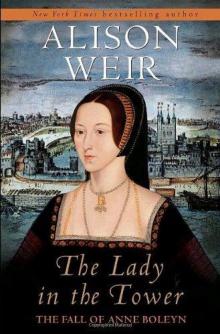 The Lady in the Tower: The Fall of Anne Boleyn
The Lady in the Tower: The Fall of Anne Boleyn Six Wives of Henry VIII
Six Wives of Henry VIII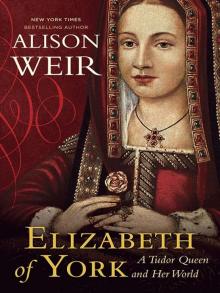 Elizabeth of York: A Tudor Queen and Her World
Elizabeth of York: A Tudor Queen and Her World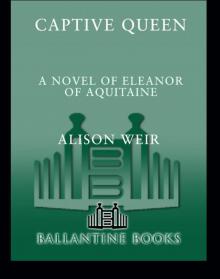 Captive Queen
Captive Queen Innocent Traitor
Innocent Traitor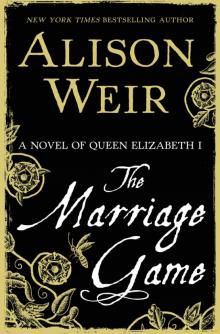 The Marriage Game
The Marriage Game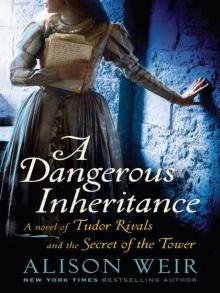 A Dangerous Inheritance
A Dangerous Inheritance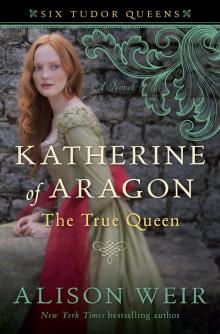 Katherine of Aragón: The True Queen
Katherine of Aragón: The True Queen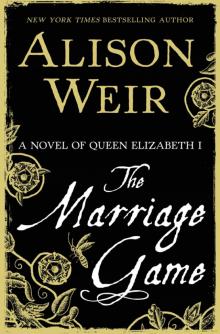 The Marriage Game: A Novel of Queen Elizabeth I
The Marriage Game: A Novel of Queen Elizabeth I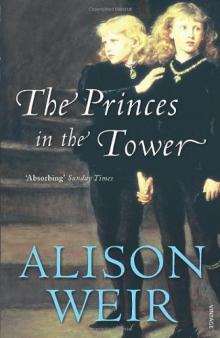 Princes in the Tower
Princes in the Tower Anne Boleyn: A King's Obsession
Anne Boleyn: A King's Obsession Traitors of the Tower
Traitors of the Tower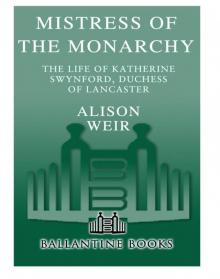 Mistress of the Monarchy: The Life of Katherine Swynford, Duchess of Lancaster
Mistress of the Monarchy: The Life of Katherine Swynford, Duchess of Lancaster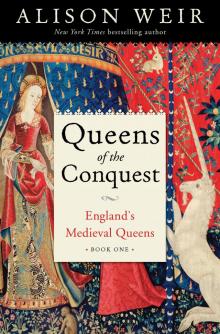 Queens of the Conquest: England’s Medieval Queens
Queens of the Conquest: England’s Medieval Queens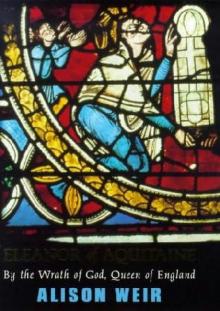 Eleanor of Aquitaine: A Life
Eleanor of Aquitaine: A Life Mary, Queen of Scots, and the Murder of Lord Darnley
Mary, Queen of Scots, and the Murder of Lord Darnley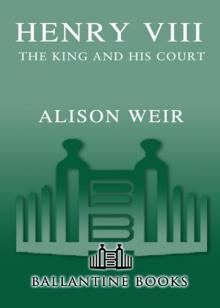 Henry VIII: The King and His Court
Henry VIII: The King and His Court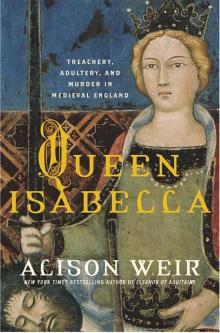 Queen Isabella: Treachery, Adultery, and Murder in Medieval England
Queen Isabella: Treachery, Adultery, and Murder in Medieval England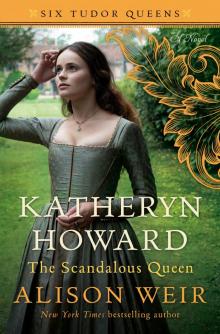 Katheryn Howard, the Scandalous Queen
Katheryn Howard, the Scandalous Queen Arthur- Prince of the Roses
Arthur- Prince of the Roses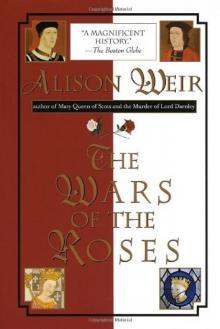 The Wars of the Roses
The Wars of the Roses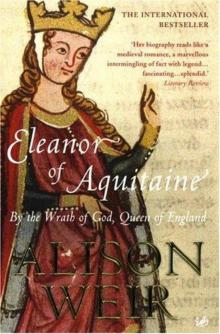 Eleanor of Aquitaine: By the Wrath of God, Queen of England
Eleanor of Aquitaine: By the Wrath of God, Queen of England Mary Boleyn: The Great and Infamous Whore
Mary Boleyn: The Great and Infamous Whore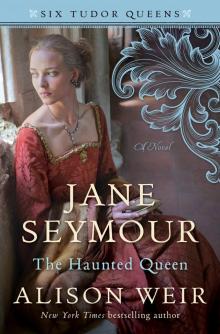 Jane Seymour: The Haunted Queen
Jane Seymour: The Haunted Queen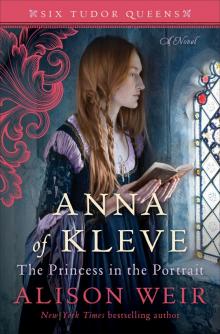 Anna of Kleve, the Princess in the Portrait
Anna of Kleve, the Princess in the Portrait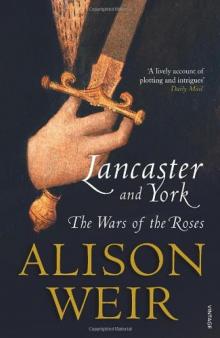 Lancaster and York: The Wars of the Roses
Lancaster and York: The Wars of the Roses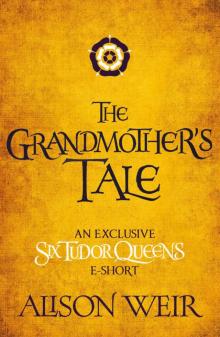 The Grandmother's Tale
The Grandmother's Tale The Princess of Scotland (Six Tudor Queens #5.5)
The Princess of Scotland (Six Tudor Queens #5.5)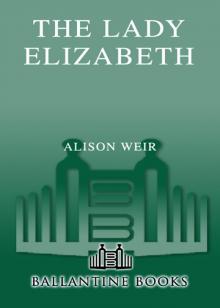 The Lady Elizabeth
The Lady Elizabeth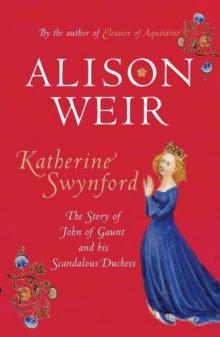 Katherine Swynford: The Story of John of Gaunt and His Scandalous Duchess
Katherine Swynford: The Story of John of Gaunt and His Scandalous Duchess The Curse of the Hungerfords
The Curse of the Hungerfords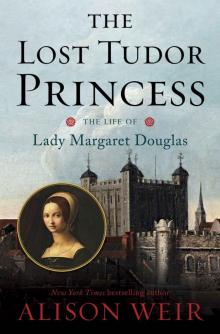 The Lost Tudor Princess: The Life of Lady Margaret Douglas
The Lost Tudor Princess: The Life of Lady Margaret Douglas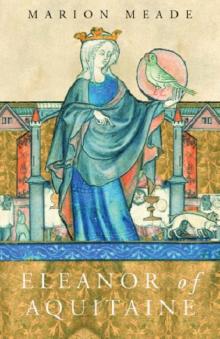 Eleanor of Aquitaine
Eleanor of Aquitaine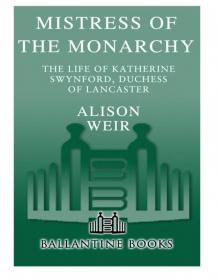 Mistress of the Monarchy
Mistress of the Monarchy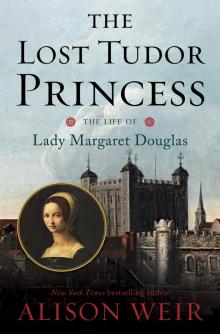 The Lost Tudor Princess
The Lost Tudor Princess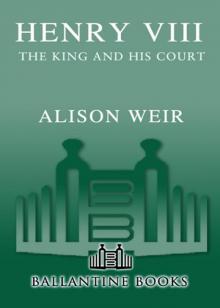 Henry VIII
Henry VIII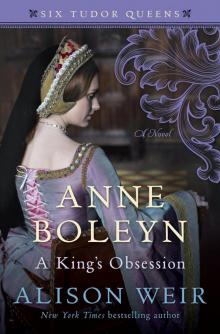 Anne Boleyn, a King's Obsession
Anne Boleyn, a King's Obsession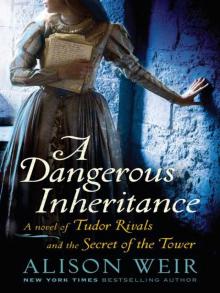 A Dangerous Inheritance: A Novel of Tudor Rivals and the Secret of the Tower
A Dangerous Inheritance: A Novel of Tudor Rivals and the Secret of the Tower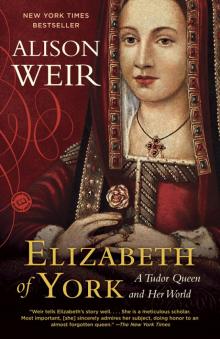 Elizabeth of York
Elizabeth of York Katherine of Aragon, the True Queen
Katherine of Aragon, the True Queen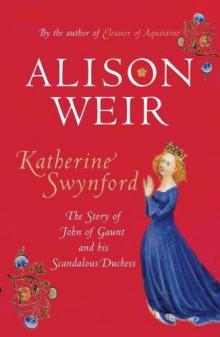 Katherine Swynford
Katherine Swynford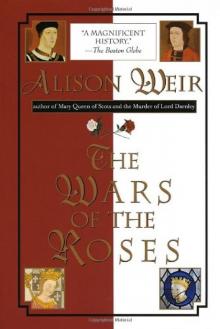 Wars of the Roses
Wars of the Roses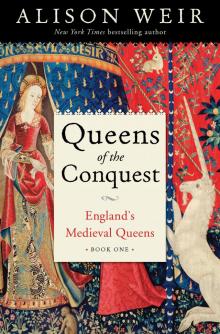 Queens of the Conquest
Queens of the Conquest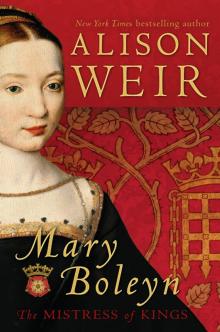 Mary Boleyn
Mary Boleyn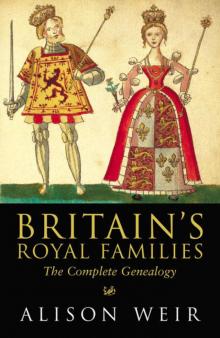 Britain's Royal Families
Britain's Royal Families The Tower Is Full of Ghosts Today
The Tower Is Full of Ghosts Today Life of Elizabeth I
Life of Elizabeth I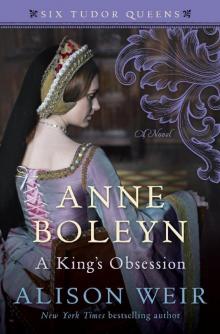 Anne Boleyn A King's Obssession
Anne Boleyn A King's Obssession Lancaster and York
Lancaster and York Jane Seymour, the Haunted Queen
Jane Seymour, the Haunted Queen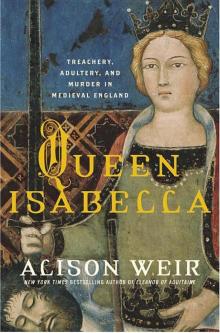 Queen Isabella
Queen Isabella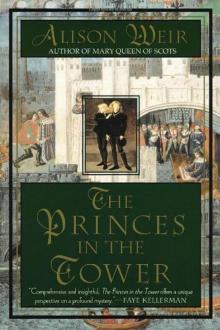 The princes in the tower
The princes in the tower